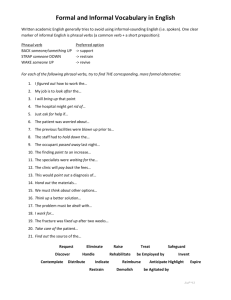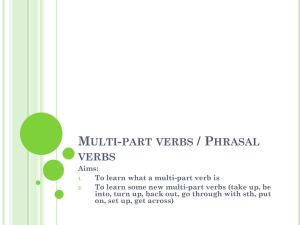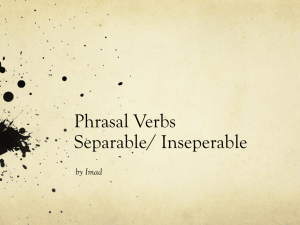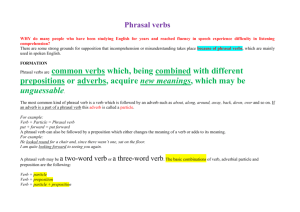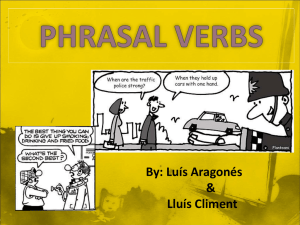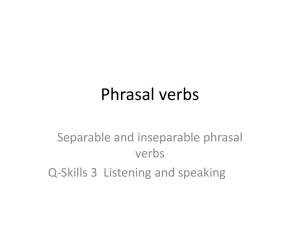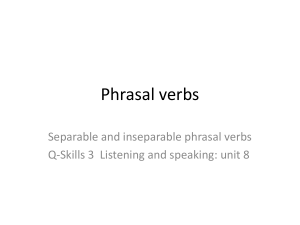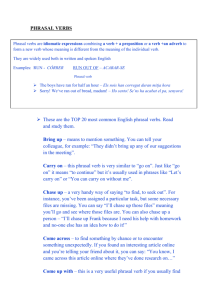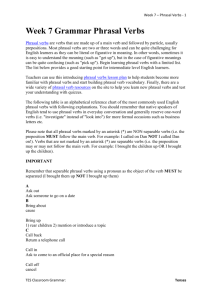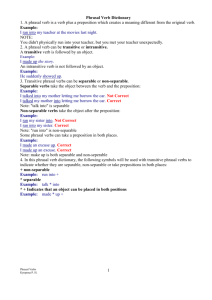Lesson Plan-Phrasal Verbs
advertisement
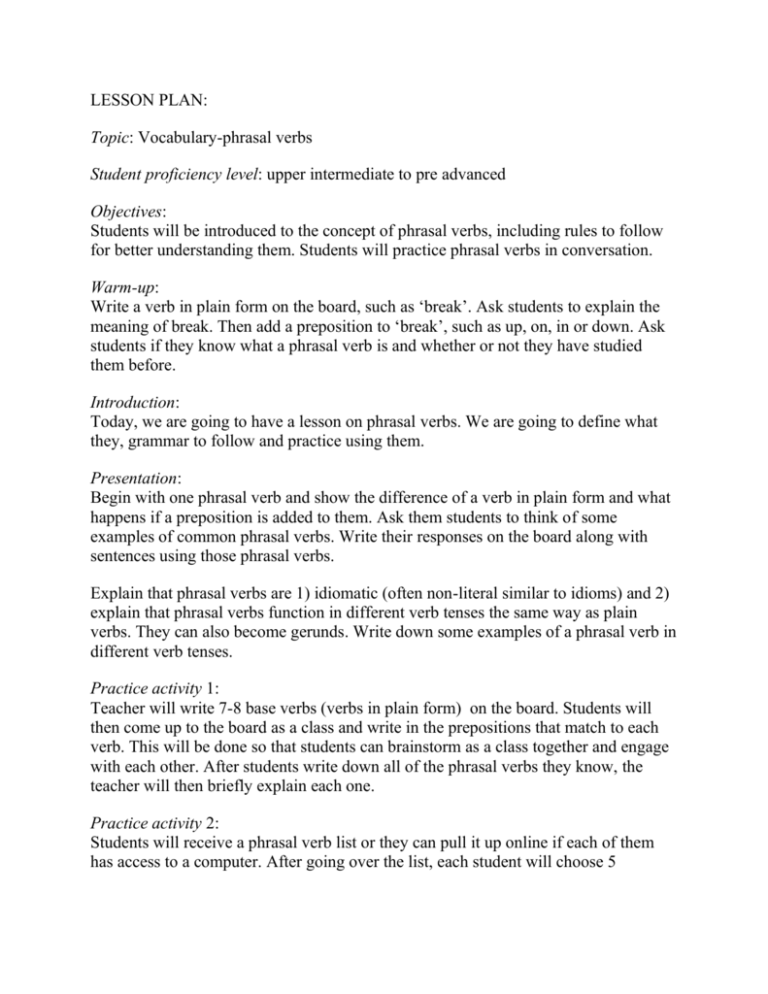
LESSON PLAN: Topic: Vocabulary-phrasal verbs Student proficiency level: upper intermediate to pre advanced Objectives: Students will be introduced to the concept of phrasal verbs, including rules to follow for better understanding them. Students will practice phrasal verbs in conversation. Warm-up: Write a verb in plain form on the board, such as ‘break’. Ask students to explain the meaning of break. Then add a preposition to ‘break’, such as up, on, in or down. Ask students if they know what a phrasal verb is and whether or not they have studied them before. Introduction: Today, we are going to have a lesson on phrasal verbs. We are going to define what they, grammar to follow and practice using them. Presentation: Begin with one phrasal verb and show the difference of a verb in plain form and what happens if a preposition is added to them. Ask them students to think of some examples of common phrasal verbs. Write their responses on the board along with sentences using those phrasal verbs. Explain that phrasal verbs are 1) idiomatic (often non-literal similar to idioms) and 2) explain that phrasal verbs function in different verb tenses the same way as plain verbs. They can also become gerunds. Write down some examples of a phrasal verb in different verb tenses. Practice activity 1: Teacher will write 7-8 base verbs (verbs in plain form) on the board. Students will then come up to the board as a class and write in the prepositions that match to each verb. This will be done so that students can brainstorm as a class together and engage with each other. After students write down all of the phrasal verbs they know, the teacher will then briefly explain each one. Practice activity 2: Students will receive a phrasal verb list or they can pull it up online if each of them has access to a computer. After going over the list, each student will choose 5 different phrasal verbs and 5 sentences using those chosen phrasal verbs in either the past, present or future verb tenses. Production: Students will practice using phrasal verbs in conversations with each other. Depending on the size of the class, each student must choose 3-5 different phrasal verbs. For each chosen phrasal verb, student A will begin a conversation with student B using that particular phrasal verb. Students are encouraged to have natural conversations with each other and to even tell a story. Each student will repeat the process using each chosen phrasal verb with a different member of the class.
